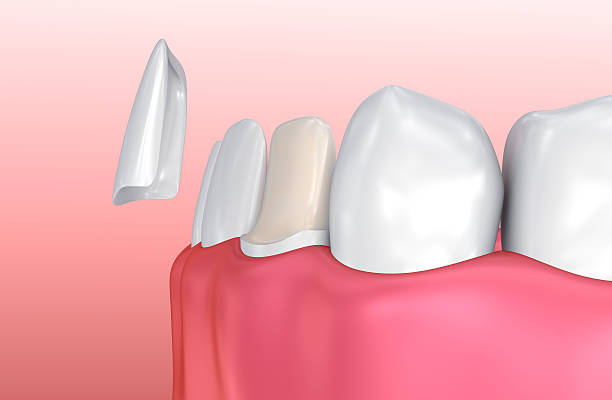Dental veneers are thin layers of ceramic material placed on the buccal (front) surface of the teeth to improve their aesthetics.
They can cover discolored teeth that do not respond to whitening.
They can correct teeth with cracks or significant wear that have developed over time.
They are used to smooth out uneven or irregular surfaces.
They can close small gaps between teeth, providing an overall harmonious smile.
In some cases, they correct teeth that are misaligned or different in size or shape.
A thin layer from the front part of the tooth (enamel) is removed to create space for the veneer.
The dentist takes an impression of the tooth and the surrounding area.
The impressions are sent to a dental laboratory where the ceramic veneers are made.
Temporary veneers may be placed until the permanent ones are ready.
The ceramic veneers are placed and adjusted to fit perfectly on the teeth.
Ceramic veneers can mimic the natural color and shine of teeth.
They are durable and long-lasting, often with a lifespan of over 10-15 years.
They provide immediate and noticeable improvement in the appearance of the smile.
However, like any dental procedure, they have their own challenges and maintenance requirements. Good oral hygiene and regular visits to the dentist for check-ups and maintenance of the veneers are recommended.
More specifically, the placement of dental ceramic veneers is a highly technically demanding procedure that requires specialized knowledge and skill from the dentist. The process involves several critical steps, each of which must be executed precisely to achieve the desired aesthetic and functional result.
In the following video, we present the process of restoration with porcelain veneers.

